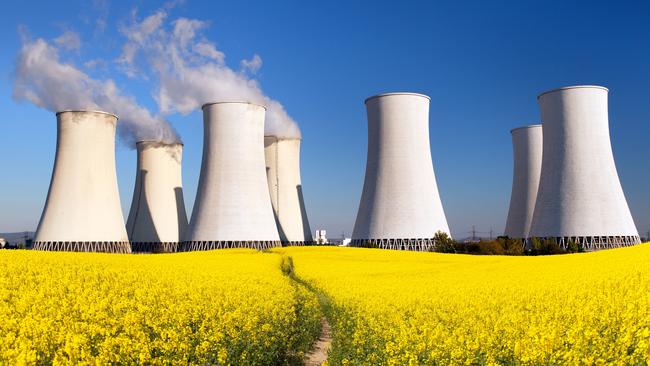
But their reasons were all wrong.
According to the report in The Australian they concluded that proposing water-cooled nuclear power to the Australian public would be an electoral disaster.
While there are they have been relatively few nuclear power accidents, when they take place they create a catastrophe of considerable magnitude. Australians do not want to take that risk and there is no need because nuclear power technology has been turned on its head.
Old-style water cooled nuclear plants are still being built but nations wishing to generate carbon-free power cheaply and safely 24 hours a day are now looking at “generation four” molten salt-cooled nuclear, which carries none of the risks created by the old technology.
In the national interest the Australian government and the opposition need to link together to explore the molten salt-cooled power plant option.
China is so convinced of the power of molten salt technology that it is designing submarines based on this technology and offering the concept to countries in the region. They will make our $120bn to $150bn investment in lead acid battery driven submarines (1918 technology) the equivalent of bows and arrows pitched against machine guns.
Although China is leading the way, European companies are also very active in molten salt technology. American companies are pursuing the technology but are curbed because the extensive rules that were devised for water-cooled nuclear plants are being applied to molten salt. They are totally inappropriate.
In Australia, apart from Lucas Heights, we have no nuclear industry so we are ideally placed to pursue molten salt. These plants require nothing like the huge nuclear complexes that have a scary image. The technology does not produce a by-product that can be used to make bombs.
Modern molten salt plants can be the size of a shipping container; assembled in a factory and then transported to where they are required. The technology is moving so fast that we could decide to have molten salt-cooled plants anywhere in Australia and have them running in 12 to 18 months.
I am going to quote from one Danish-based company, Seaborg Technologies, but there are many others in the business. We need to start an investigation of the technology and the claims of the companies developing it.
In addition we need to understand what is available and is likely available in the short term plus projections for the future. I emphasise that the Seaborg proposal may not be what is embraced by Australia but it illustrates the possibilities and the need to conduct a thorough investigation.
The Danish say that low-cost container-sized compact molten salt reactors can be mass-manufactured in their thousands, then placed on floating barges and transported around the world or around Australia.
They use nuclear fuel that’s mixed into fluoride salts. The combination is liquid above 500C (932F), allowing it to flow through the reactor, which operates at near-atmospheric pressures. This liquid salt functions as a coolant for the nuclear fuel, replacing the high-pressure water cooling in old-style nuclear.
But if an accident takes place and the fuel is exposed to air, instead of venting explosively as steam, it acts like lava and solidifies into solid rock that can be cleaned up by safety teams. It also has very low solubility in water, so it’s comparatively safe even if the salt falls into the sea.
Offshore barges
Seaborg says the power plants do not have to be placed on land but can remain in the water.
Obviously that claim needs to be tested but if it can be carried out safely there is no need to buy vast tracks of land and the power produced can be fed directly into existing power grids.
Let me quote from Seaborg’s promotion:
“These barges can be moved just about anywhere on the planet, either moored offshore or on large or small rivers, depending on how big a reactor it is. There’s virtually no site preparation required; it’s fully self-contained and very easy to connect to a power grid. Seaborg estimates it can service 95 per cent of the world’s population this way.”
I am not endorsing the claim but we need to examine these technologies which offer undreamed of potential.
At the risk of getting too far ahead we could use this low-cost power source to produce carbon free steel or for water desalination.
Because of the high temperatures it can actually extract carbon from the air so it becomes carbon minus rather than carbon neutral. This is a technology the nation must explore and not simply throw it out because attached to it is the dreaded word “nuclear”.
And we must not give the investigation to a group of public servants but rather pick the best brains in the country, who will have respect from all sides of politics, to conduct the investigation.





Federal cabinet has once again considered water-cooled nuclear power plants as the best way to generate carbon-free power. They reached the right conclusion: “No”.